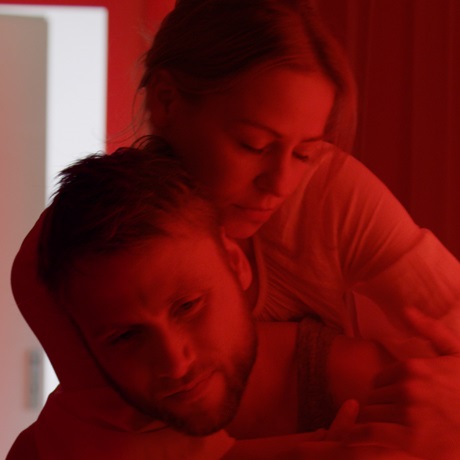 Interview Actors & Director
Interview Actors & Director
| Statement by the Director & Writer
A Leap into the Unknown
Twenty years ago, my father decided to start his life over. He wanted to start from scratch again to get a second chance at happiness. His decision continues to haunt me today. At a time when day-to-day navigation systems are meant to make our lives all the more secure, it makes me want to lose myself, to embark again on a quest for unforeseen discoveries.
I wanted to make a film about what it would be like to think about freedom in the middle of one’s life. Even just the thought of an irreversible new start at life is risky. Perhaps one might give it a try if not alone. Icons of light (Lichtgestalten) is a story about two people who gather so much strength from their love that they’re able to overcome their own limitations. Hand in hand, they face a leap into the unknown.
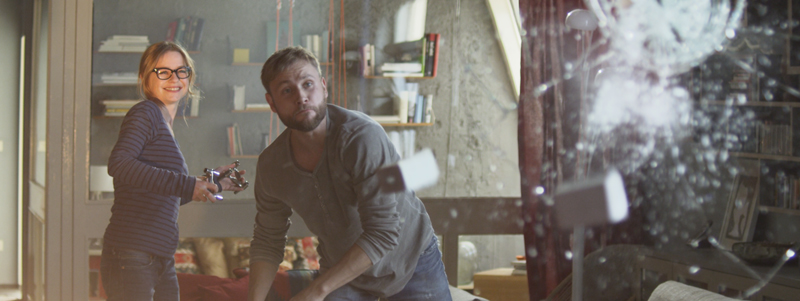
Freedom
Katharina and Steffen fear that they may have lost their way over the last few years. They know that they have since outgrown their childhood dreams, but what has replaced them? One night they ask themselves: “Would we have the courage to just let everything go and begin somewhere all over again?” So many people have thought about it, but the thought is usually gone in a day. Katharina and Steffen couldn’t let that thought go.
Their best friends, the couple Robert and Paul, are not sympathetic to their plan to disconnect from everything and everyone. The two men are looking for a way to integrate into society. Sebastian Schwarz plays the role of Robert, full of internal conflicts. He says confidently to Katharina: “It’s a mind game. A truly self-determined life doesn’t exist.” But after a while he wonders: “If you’re happy with your transition then you put my whole life into question as well. If you fail, you take my hope with you.”
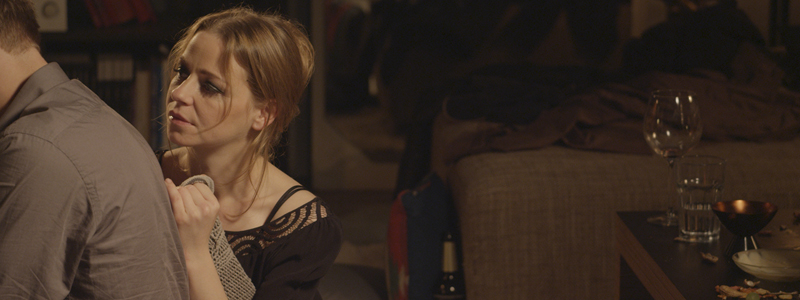
Screenplay
I didn’t just want to portray the suffering of Katharina and Steffen; I also wanted to make their unfulfilled yearning palpable. I looked for forms and movements that, together with the music and sound design, created a cosmos apt for viewers to bring in their own fantasies. The surface of the film needed to be open and nondescript, though a carefully constructed matrix lies underneath. The dramaturge, Alexander Kunja, was a valued partner in the development and steering of this matrix. He has a truly remarkable imagination.
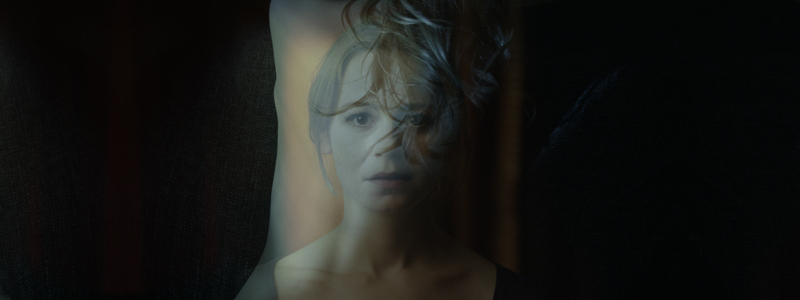
Theresa Scholze
Theresa’s precision as an actress was still fresh in my mind from working together on Four Windows (Vier Fenster). She quickly senses what I want to create in each scene. While working, we can often communicate in half-sentences. For example, she once performed uninterrupted for five minutes and I only said: “The gasp, a bit gloomier, but only at the last moment, already in movement.” Theresa, amused, replied: “Gloomier.” She implemented it perfectly in the very next take. We didn’t need to discuss which gasp was meant, and we both didn’t really know how to act out a gasp with more gloom. But it worked. With Theresa I can be exceptionally discriminating, and yet she always performs with the same lightness and ease.
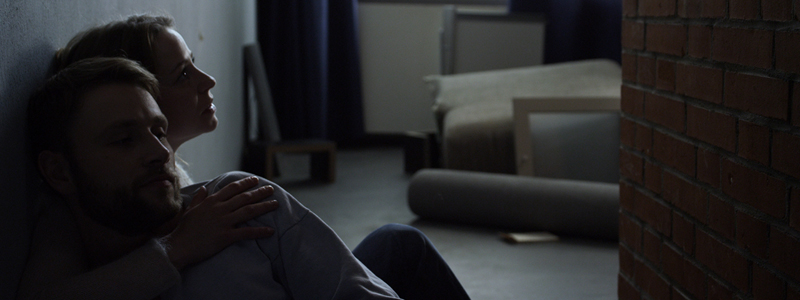
Max Riemelt
As an actor, Max Riemelt is extraordinarily authentic. Direct access to a scene provides him with clarity and strength. This was especially useful in Icons of Light to offset the film’s contemplative underpinning with something tangible and corporeal. While working with Max, I discovered that things get especially exciting on the set when I open wide the possibilities for him as an actor and prepare things well for his arrival. He enters like a gust of wind. With skillful movement he transforms the setting and incites immense fascination.
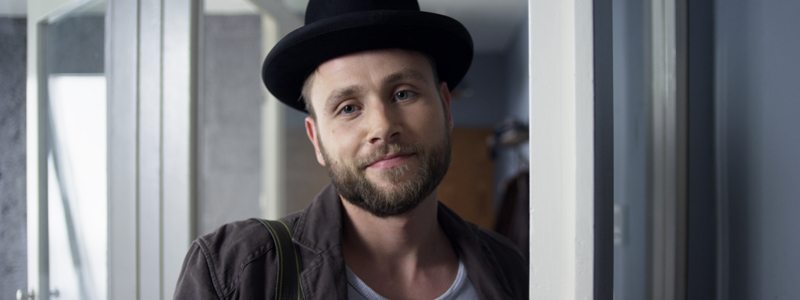
Cinematography
The main characters could have shot the entire film themselves. With the cameraman, Mario Krause, I opted to not make use of the pseudo-authentic style of home video. We wanted to start at a higher aesthetic level to make it possible to further develop the film visually.
In all of his precisely arranged images, Mario always looked for the tender moment. He captured each scene from such an interior place, it’s as though his camera is another character of the film that moves unseen through the rooms and provides comfort right where it is needed.
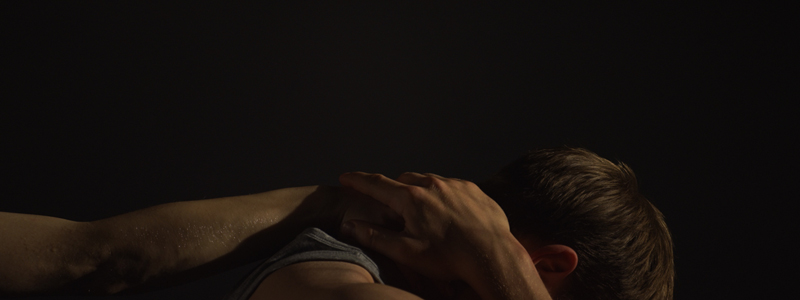
Set Design
The set designer, Paola Cordero Yannarella, looked for an interesting dichotomy in every detail of her work. Katharina and Steffen’s apartment is a space of comfort and emotional intimacy. At the same time, an obscure hunger for adventure shimmers throughout. We built several intermediate worlds, such as the constricted architecture under the mezzanine staircase. Using a particular lighting arrangement we were able to take the characters out of their everyday context. Instead, their sinister interior world flickered for just a moment. During the film, the characters thus transform their surroundings themselves. The bleaker the rooms become, the louder the call to flee resonates.
Editing
As David J. Rauschning began editing the film, his book Die Kunst der Auslassung. Montage im szenischen Film (“The Art of Omission. Montage in Feature Film”) was about to be published. This was a fantastic coincidence. I wanted to work with omissions in Icons of Light, just as I did in my film Four Windows. The absent or the untold was to become a building block for the story. The viewer would often only see the result of an occurrence and would thus reconstruct it retrospectively using his or her own imagination.
A fragmentary narrative resulted from the self-made character of the film. Katharina and Steffen only reveal things about themselves when they turn the camera on. This made it possible to break open the film’s temporal and spatial relations. The boundaries thus fade away between the characters’ reality, the ways the characters present themselves, and their own imaginations.
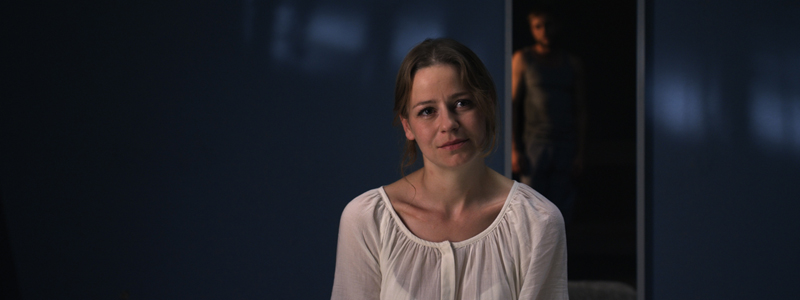
The Music
I shot independent image sequences that only took on narrative form once the corresponding sound design was added. For example, colorful spots of light suddenly appeared and drifted along Katharina’s naked back. These images provided the composers with much room for creative freedom. At the same time, it was also important to work with a great deal of precision to transport the underlying narrative.
I had already worked with the composer Chandra Fleig on Four Windows I was very fortunate that he agreed to make all of the songs and song-like segments for Icons of Light. Phillip Feneberg crafted a unique arrangement of electronic sounds, classical instrumentation and adventurous sound design. Felix Raffel composed minimalistic, diaphanous segments along with the stirring passages accompanying the blazing fire.
Production
All through the preparation phase and while filming, I needed to be as free as possible for directing. My entire production team accomplished so much during this time. The production manager, Martin Danisch, arrived with more determination than I ever expected. I can hardly imagine how Icons of Light would have been possible without him.
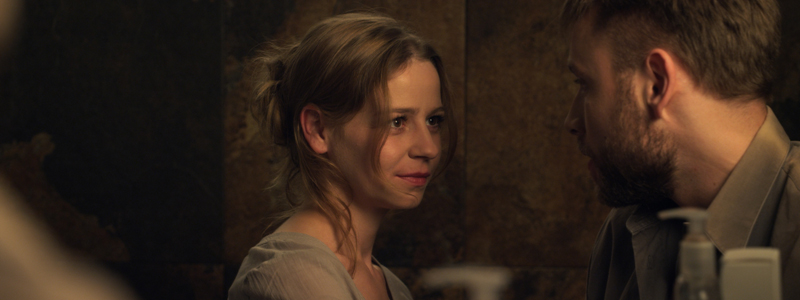
Icons of Light
Working on an artistic film, one meets people who take risks. They go under the radar for some length of time, driven by the hope that there might be something meaningful to discover. Icons of Light describes precisely this hope. The film is meant to spark the courage to embark on a new epoch.
